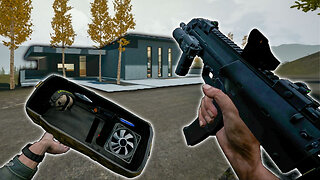Premium Only Content

A History of the 14 Coups Led by the United States - Not Always to its Own Benefit (2006)
A historical analysis of how the United States has overthrown foreign governments over the course of more than a century, starting in the late 19th century with Hawaii and continuing through to Iraq in the early 21st century. The book covers the motivations, methods, and consequences of these interventions, providing a critical view of American foreign policy.
Key Themes and Periods
Economic and Strategic Interests:
Kinzer argues that most of the U.S.-led regime changes were motivated by economic interests, particularly the desire to control resources like sugar in Hawaii, bananas in Central America, or oil in the Middle East. Strategic concerns, such as the desire to counter rivals or protect American businesses, were also significant.
Early Examples: Hawaii and the Caribbean:
The book begins with the overthrow of the Hawaiian monarchy in 1893, driven by American sugar planters and supported by U.S. military forces. This set a precedent for future interventions. Kinzer also discusses interventions in Cuba, Puerto Rico, and the Philippines following the Spanish-American War.
The "Banana Republics":
In the early 20th century, U.S. interventions in Central America and the Caribbean, such as those in Nicaragua, Honduras, and Guatemala, were largely driven by the interests of American corporations like the United Fruit Company. These interventions established the term "banana republics" and showed the U.S. willingness to use military force to protect its economic interests.
Cold War Era:
During the Cold War, U.S. regime change efforts were often justified by the need to combat communism. Kinzer discusses cases such as the CIA-led coups in Iran (1953) and Guatemala (1954), the Bay of Pigs invasion in Cuba (1961), and the intervention in Chile (1973). These actions were often framed as necessary to prevent Soviet influence but had long-lasting negative impacts on the affected countries.
Late 20th Century and Beyond:
The book also covers more recent interventions, such as the invasions of Grenada (1983) and Panama (1989), the Gulf War (1991), and the Iraq War (2003). These later interventions are shown to be part of a continuing pattern of American interventionism, often with disastrous results for the targeted countries and for U.S. interests in the long term.
-
 48:39
48:39
The Memory Hole
11 months agoOperation Gladio Part 3: CIA, MI6, Subversive Activities & False Flag Operations
1.62K4 -
 1:53:27
1:53:27
Camhigby
14 hours ago72 ARRESTS: Chicago Train Attack Is Worse Than Anyone Knows
8.44K4 -
 23:10
23:10
DeVory Darkins
1 day agoBondi issues chilling warning to comey after shocking twist emerges
19.5K73 -
 8:01
8:01
MattMorseTV
10 hours ago $30.76 earnedVance has finally HAD ENOUGH.
57.4K95 -
 15:18
15:18
MetatronHistory
2 days agoThe REAL Origins of the SUMERIANS
7.78K2 -
 22:43
22:43
Nikko Ortiz
14 hours agoGhost Of Tabor Is Like Fent...
12.5K2 -
 17:44
17:44
The Pascal Show
14 hours ago $1.24 earnedNOW LAPD IS LYING?! TMZ Doubles Down On Source's "Celeste Rivas Was FROZEN" Claims
8.43K3 -
 18:05
18:05
GritsGG
15 hours agoThis Duo Lobby Got a Little Spicy! We Have Over 20,000 Wins Combined!
9.43K -
 LIVE
LIVE
Lofi Girl
3 years agolofi hip hop radio 📚 - beats to relax/study to
251 watching -
 37:08
37:08
MetatronGaming
2 days agoWarhammer Shadow of The Horned Rat DOS Version is FANTASTIC! 1995
19.3K2